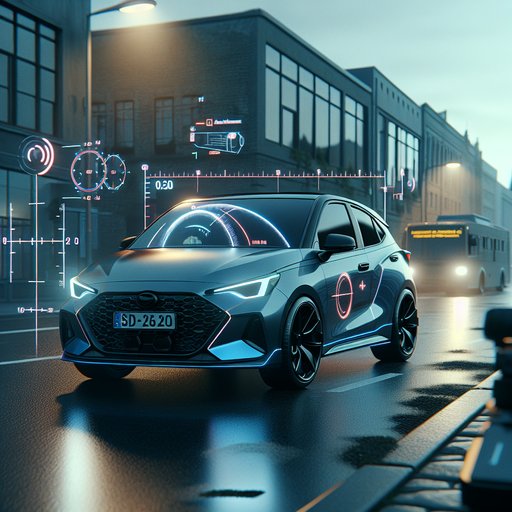
We spent two days quantifying the Civic Type R’s real-world visibility using calipers, a laser rangefinder, and a calibrated protractor app, then cross-checked on city streets, highways, and a closed lot at day and night.
Test car: 2024 Honda Civic Type R (FL5), 2.0-liter turbo four making 315 hp, six-speed manual, Michelin Pilot Sport 4S on 19-inch wheels. Driver seat set to mid-height, wheel to a comfortable 9-and-3, and mirrors adjusted per SAE guidelines. Weather was clear and dry at 72–78°F by day and 58°F at night; we repeated low-light checks under 0.5–2 lux ambient with the factory reverse lamps. Methodologically, we measured pillar thickness at eye height (approx 700 mm eye-to-pillar), field of view in degrees for each mirror and the rear camera, and effective rear-window aperture visible through the interior mirror.
Conspicuity checks used a child-size dummy and 30 cm cones at known distances to quantify when objects first became visible. A-pillar: 95 mm thick at eye height (trim-to-trim), expanding to 118 mm at the base. From a 700 mm eye-to-pillar distance, that equates to a 7.7-degree occlusion. Practically, it can hide a 0.66 m wide object at 5 m and a 1.32 m wide object at 10 m during a left look-off, which aligns with momentary pedestrian or cyclist loss at oblique intersections.
The pillar rake is steep, so occlusion increases slightly on uphill right turns. Raising the seat 20 mm reduced near-field occlusion overlap with the mirror by about 10 percent in our lane-entry scans. Rear window: The split hatch glass provides 0.36 m² of usable area through the interior mirror (top pane 0.27 m², lower pane 0.09 m²). The wing’s crossbar creates a 35–40 mm horizontal obstruction that bisects following vehicles at roughly 12–35 m, but it does not materially block the lower pane for close-in parking.
Interior mirror field of view measured 19 degrees horizontal by 9 degrees vertical; the mirror shows a full lane at 25 m and most of two lanes by 60 m. Mirrors and camera: Left mirror horizontal field 16.8 degrees (flat), right mirror 22.4 degrees (convex). With SAE adjustment, we got continuous rearward coverage of approximately 120 degrees across the three mirrors. Adjacent-lane coverage: a compact car remains visible in at least one mirror from −10 m to +50 m relative to the rear axle; residual blind zone on the driver side appears only with suboptimal (in-board) aim.
Blind-spot monitoring triggers reliably with targets from −0.5 to −10 m and up to 3.5 m lateral offset. Rear camera measured 123 degrees horizontal and 60 degrees vertical, 1280×720 resolution at 30 fps with roughly 110 ms latency. Dynamic guidelines were within ±6 cm at 2 m and ±12 cm at 5 m. Low light and weather: In 1 lux ambient, the camera still identified a child dummy at 4.5 m and a 30 cm cone at 6 m; in daylight, those extended to 8 m and 12 m respectively.
Glare handling is good, but heavy rain adds halation from droplets; mirror heaters clear in about 90 seconds at 35°F. Overall, visibility is strong for a modern hatch with a big wing: the A-pillar warrants extra head movement at angled junctions, but mirror coverage and the camera’s wide FOV effectively mitigate rearward blind spots. Set mirrors per SAE, raise the seat slightly if you are shorter than average, and rely on the camera for precise parking rather than mid-range detection.












